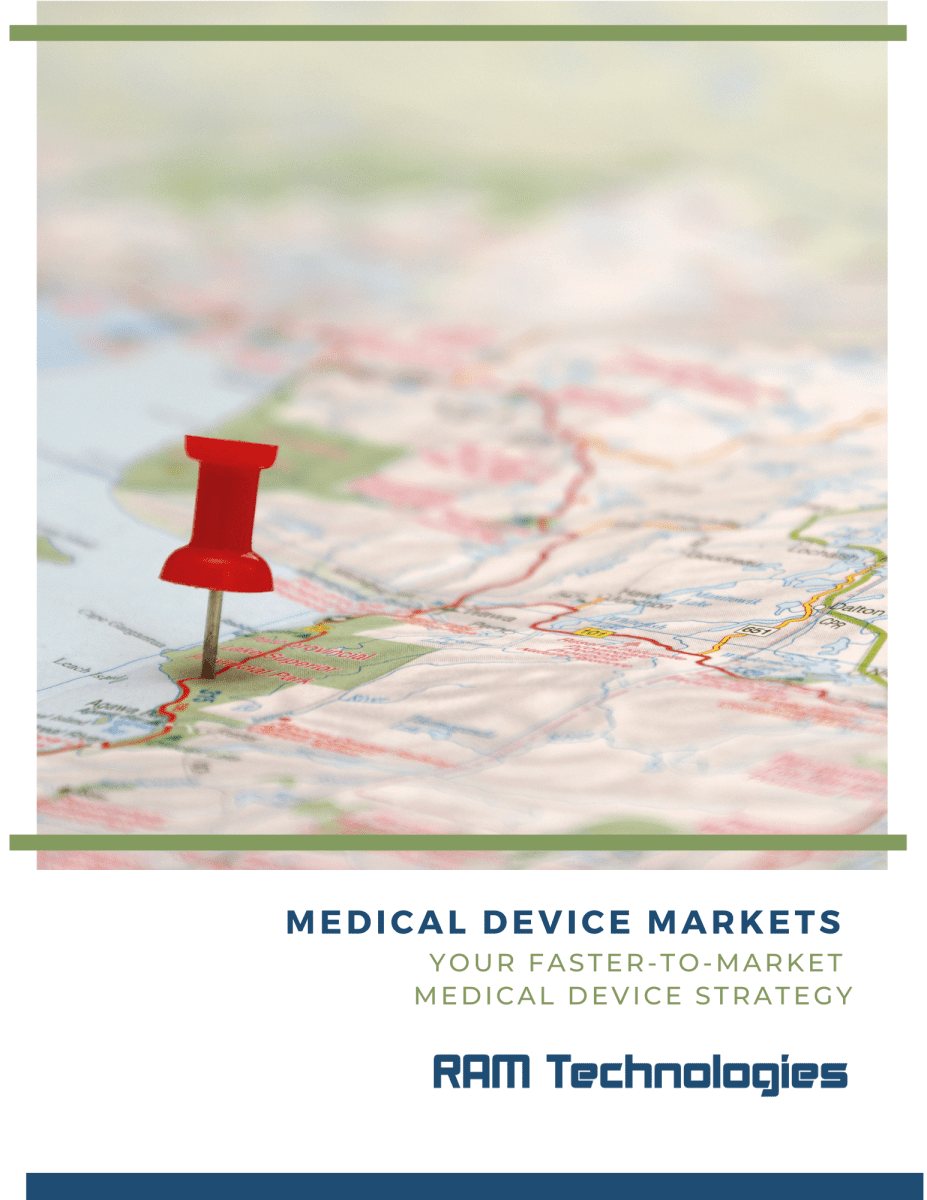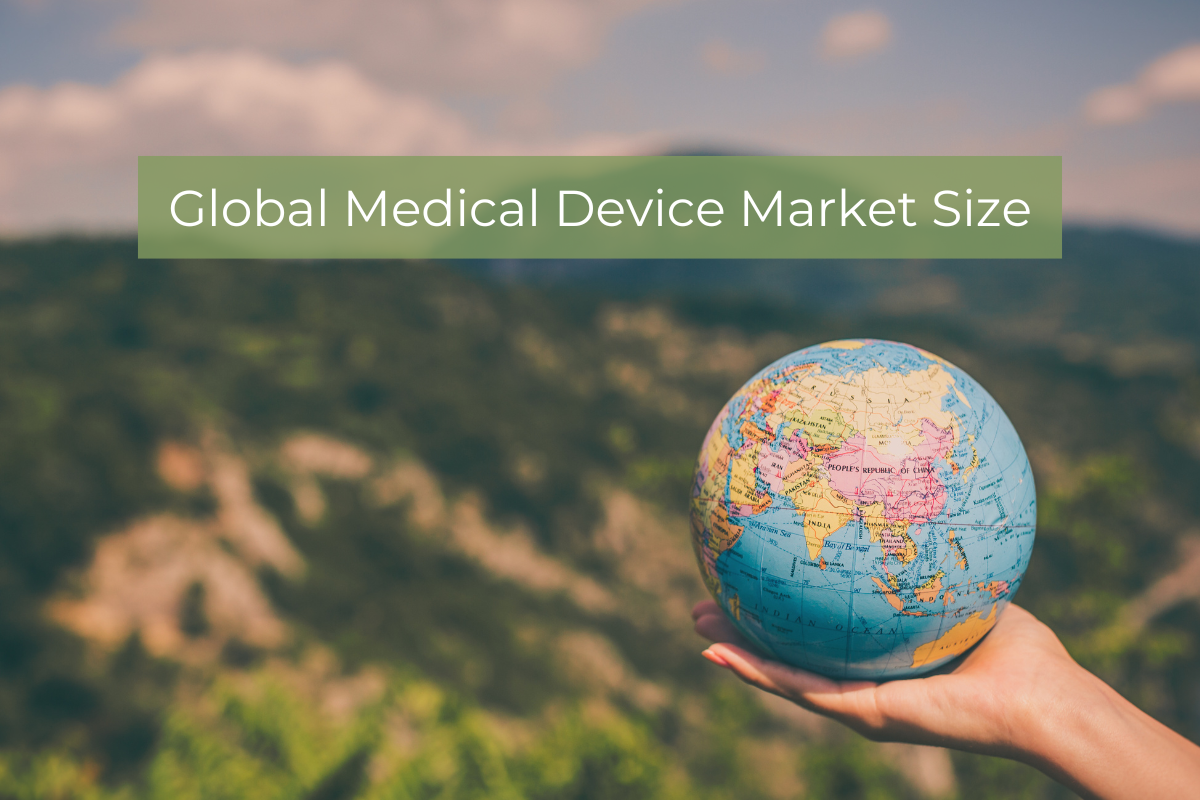Global Medical Device Industry Statistics – Outline
Manufacturing a medical device takes a number of involved steps, not least of which figuring out where you should market and sell your medical device. To make this decision, you need to have a grasp of the global medical market. In this blog, we’ll cover the global medical market size, emerging trends across the globe, and what medical device manufacturers should consider when seeking approval in different global regions.
What is the global medical device market size?
The global medical device market is expected to reach $850 billion by 2030 with a compound annual growth rate (CAGR) of 5.5% from 2022 to 2030. The region with the largest share of the market is North America when compared to Europe, Latin America, Asia-Pacific, the Middle East, and Africa.
The Asia-Pacific region is the fastest-growing area during the forecasted period. This is due to a combination of factors: The rising population of an aging community, growing health concerns in the area, and an increase in per capita income. Healthcare infrastructure investment in the region is expected to continue to boost the market. In the Asia-Pacific region, China and India have the highest revenue shares. Local government incentives in these countries, plus healthcare reforms, are driving the market.
What are some emerging trends in the global medical device market?
Technological medical device trends
In addition to potential upcoming shifts in revenue and market share by region, some technological advancements may cause widespread changes in the global medical device market. Med Device Online predicts that the following technology trends will play an important role in the future of medical devices:
- Cybersecurity: Healthcare products should be designed to protect against cybersecurity risks, and medical device manufacturers should be mindful of the interconnectivity of various devices and the vulnerabilities that can come from this connectivity. Strengthening authentication protocols is one way that MedTech companies can keep cybersecurity at the forefront.
- 5G Technologies: 5G will enable the delivery of information at unprecedented speeds, 2-5 times faster than current 4G or Wi-Fi technology. This will allow for faster diagnosis, as well as extend the service area to people living in rural and remote areas.
- 3D-Printed Devices: Also known as additive manufacturing, 3D printing grew during the supply chain disruptions triggered by the COVID-19 pandemic. This technology allows hospitals that have 3D printers to produce needed components onsite. Manufacturers that develop digital blueprints for printers open a door to a new world of opportunities.
- AI and Machine Learning: AI is all over the news, especially with the rise of ChatGPT and the debut of Google Bard. Medical device manufacturers are most likely to harness AI technologies for software as a medical device (SaMD) products – detecting and treating diseases, for example. AI may also play a role in robotics, wearables, monitoring, data analysis, virtual health assistance, labs, and more.
- Medical Robotics: With nursing burnout on the rise, and hospitals experiencing staffing shortages, some hospitals have turned to robotics to help nurses accomplish routine tasks. Some have even developed to be remotely controlled.
Funding and revenue trends
Across the global MedTech industry, in-vitro diagnostics (IVD) and healthcare IT have received the most venture capital (VC) funding over the past 10 years. Deal sizes are also increasing. Cardiovascular devices are the MedTech devices receiving the most funding. The median deal value for all medical devices was $268 million.
In the U.S. and EU, the therapeutic device segment grew by 10% in 2021, with orthopedic, dental, cardiovascular, women’s health, and ophthalmic devices increasing revenues by 16%. Imaging, non-imaging devices, research, and other equipment all saw growth of over 20%, with non-imaging diagnostics leading at 26%.
Now that the major shutdowns at the beginning of the pandemic are behind us, healthcare facilities are seeing a rebound in elective procedures, which is likely to increase demand for medical devices in kind.
What should manufacturers consider when looking to gain approval for their medical device?
Medical device manufacturers seeking approval in any country need to be mindful of the regulations, especially any key differences between regions.
In the U.S., manufacturers will go through the FDA for approval. While this used to be a more complex process than gaining approval in the EU, it’s recently become the easier option between the two regions. The time and money it will take to get through the process largely depends on the size of the business and the risk classification of the device. Some lower-risk devices in class I and II can be exempt from regulatory processes. Devices that are substantially equivalent to others already on the market will go through a 510(k) process that averages 6 months and costs $19,870 for larger businesses and $4,967 for smaller businesses. Otherwise, they will take the de novo pathway, which takes about 16 months and costs $132,464 for larger businesses and $33,116 for smaller businesses.
In the EU, recent changes to the medical device approval process, ushered in by MDR, have led to a backlog that is slowing down the process for almost all manufacturers, pushing out the potential wait time to receive a conformity assessment to 12-24 months. To work with a notifying body, manufacturers can expect to pay anywhere from €20,000 – €100,000. While new transition deadlines have been set for the industry in response to slowdowns, the queue is something to keep in mind when deciding where to focus your efforts.
Other countries account for 21% of the global medical technology industry. As previously mentioned, the Asia-Pacific region has seen significant growth and is definitely an area to watch. If your medical device is approved in the U.S., harmonized standards in other countries can help you gain faster approval, but you also need to be mindful of regulatory gaps and what you may need to do to ensure compliance in other parts of the globe.
At RAM Technologies, we have our finger on the pulse of regulatory standards. Our PC-based power supply units are compliant with IEC 60601-1, meaning your search for compliant PSUs can begin and end with us. Reach out with questions about our units, customization options, and more.
________________________
RAM Technologies’ power supplies are 60601-1 3.2 certified and meet 60601-1-2 EMC standards. When you’re designing your medical device and need help with a PSU, contact us for details.

Download the Markets Guide
This guide covers the basics on medical device markets, including emerging trends, current regulations, and market adoption strategies. Sign up and download it for free now!
